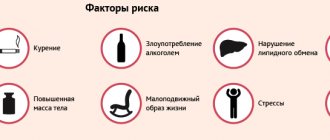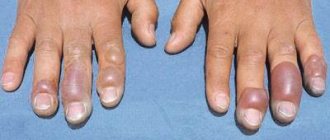Methyl alcohol is a technical substance. Methyl alcohol poisoning can cause serious complications, especially if it is taken orally frequently. Moreover, the time of their appearance can vary significantly: for example, a disorder or loss of vision can occur after a few months.
general information
Methanol or methyl alcohol is the first representative of the homologous series of monohydric alcohols, a toxic liquid.
The use of wood alcohol (carbinol) is to prepare solvents for paint, stain remover, and varnish.
It is also used in the production of glass, leatherette and plastic. Widely used in the fuel sector.
Methanol poisoning can end badly for a person, because even a small dose of methanol can cause vision loss.
You need to know the enemy by sight
Methyl alcohol is a colorless liquid with a characteristic alcoholic odor. It is used in industry for the production of household chemicals: solvents, paints, etc. Methanol compounds are sometimes used in the production of drugs. Methanol is poisonous and toxic, so you should handle it with extreme caution.
The common name for methanol is wood alcohol. It was first discovered by Bole in 1661, during the process of dry distillation of wood. Methyl alcohol began to be produced in its pure form 200 years later. And in 1932, a method was discovered that still produces methanol to this day.
The difference between methyl alcohol and ethanol
To detect the difference between the two alcohols, it is necessary to conduct an experiment, because outwardly ethanol is indistinguishable from carbinol. When the liquid is ignited, a flame will form, which will burn blue from ethyl alcohol, and green from methyl alcohol.
Another way to check is to use copper wire, which, when in contact with ethanol, emits the smell of overripe apples, and when in contact with methanol, a sharp and unpleasant aroma is formed.
Also, these two alcohols have different boiling points, so wood alcohol has it at 65, and ethyl alcohol boils at 79.
But most often people don’t even think about conducting such experiments, so any mistake can be fatal.
Characteristics of the substance
Methanol (CH3OH) is a monohydric alcohol, a contaminant. It also has other names - methyl or wood alcohol, carbinol, methyl hydrate, methyl hydroxide.
Physical properties. A colorless liquid with an odor similar to ethyl alcohol, but less pungent, was first obtained by dry distillation of wood. This method was used until the middle of the 20th century. Today, manufacturers have reduced the cost of producing methyl alcohol and no longer use natural raw materials, replacing them with oil refining waste.
Methanol - easily dissolves in ethanol, ethers, water, and many organic compounds.
In the chemical industry it is used in the process of creating formaldehyde, plastics, solvents, antifreeze, windshield washers, and brake fluid. The automobile industry uses carbinol as a fuel and as an additive to gasoline.
Methyl alcohol and ethylene glycol are extremely toxic substances that, although they are alcohol, consuming them internally leads to serious health consequences. The guaranteed lethal dose of methyl hydroxide for humans is 100 grams. But no one has ever stopped at 100. Carbinol is especially dangerous because its color and smell are practically no different from ethyl alcohol.
Effect on the body
The main place of influence of alcohol is the central nervous system. A short time after entering the stomach, the liquid is completely absorbed by the walls of the stomach and accumulates in the liver.
It is the liver cells - hepatocytes - that carry out the decomposition of alcohol into formaldehyde and formic acid. Due to the fact that the breakdown products of the substance are excreted by the kidneys, the functioning of the excretory system is disrupted.
What is methanol and what is the mechanism of its toxic effect on the body?
Methanol is a monohydric alcohol with the chemical formula CH3OH. Widely used in the chemical, gas and pharmaceutical industries, it is part of antifreeze, solvents, glass cleaners, liquid fuels, and gasoline additives. It is a transparent, colorless liquid with a specific odor and taste similar to ethyl alcohol. They can only be distinguished experimentally using hot copper wire. It is immersed in the test liquid. If it is methanol, an unpleasant and pungent odor appears; if it is ethanol, the aroma of rotten apples appears. But it is unlikely that an alcoholic who wants to quickly “improve” his condition will conduct such tests. He will simply drink the obtained “treasure” and thereby doom himself to death. This is the main danger of the substance, since it is difficult to distinguish it from alcoholic beverages by appearance, smell and taste. Even 2% methanol content in the liquid you drink can be toxic. The lethal dose of methanol can vary depending on the individual characteristics of the organism - for one, 30 ml is enough, for another, it can survive even with a much larger amount of methanol taken. There is a known case where a person managed to survive after taking 500 ml of methanol.
For the average person, a dose of 100 ml of methanol is lethal. The lethal concentration in blood plasma is considered to be 1 g/l.
The risk group for methyl alcohol poisoning most often includes chronic alcoholics, into whose bodies it enters due to the use of surrogate drinks or substitution. In addition, persons engaged in the production of products containing methanol, as well as those using methanol-based solvents for washing glass inside cars or closed, small and poorly ventilated rooms, have a significant risk of poisoning through the skin and respiratory tract.
It is not so much methyl alcohol itself that is toxic, but the products of its metabolism - formaldehyde and formic acid. The latter is a powerful inhibitor of tissue respiration and the main cause of metabolic acidosis (a shift in the pH of biological fluids to the acidic side). The main toxic effect is on the nervous, cardiovascular and excretory systems. The insidiousness of methanol is that it is quickly absorbed, but very slowly eliminated from the body. The maximum concentration in the blood is observed 30–60 minutes after consumption, and elimination lasts for 3-5 and even 7 days. Moreover, during this time, methanol can be released by the gastric mucosa and reabsorbed.
Methyl alcohol is metabolized in the liver by the enzyme alcohol dehydrogenase, but more slowly than ethanol. It is this competitive interaction that makes ethyl alcohol the main antidote for methanol poisoning.
The main pathogenetic disorders in the body caused by methanol and the products of its biochemical transformation are manifested in the following phenomena: • Metabolic acidosis (increased acidity of the internal environment). • Decreased oxygen saturation of the blood.
In addition, methanol can accumulate (accumulate) in the body, which can cause chronic poisoning with the systematic intake of even small doses of this toxic substance.
General symptoms
Methyl alcohol poisoning does not go unnoticed. The first signs of methyl alcohol poisoning appear only after 12-24 hours.
This happens due to the slow oxidation of methanol. But if a lethal dose of methanol was consumed, then death can occur within 2-3 hours after consumption.
It is very important to notice the first symptoms of methanol poisoning in order to provide first aid.
The first signs of poisoning with this substance:
- Strong headache;
- fog;
- severe dizziness;
- the appearance of sharp pain in the abdomen;
- frequent vomiting and nausea;
- formation of spots before the eyes;
- frequent and strong heartbeat;
- a sharp increase and then a drop in blood pressure;
- change of aggressive and inhibited states;
- the appearance of shortness of breath.
Signs of methanol poisoning can persist until alcohol is completely eliminated from the body. Symptoms of poisoning are very similar to any intoxication of the body with various compounds.
What are the main symptoms and signs of methyl alcohol poisoning?
Methyl alcohol poisoning can be acute or chronic. Symptoms of an acute process, depending on the dose, appear within a few hours, maximum 2 days after consumption. The acute course is characterized by the following main symptoms: • Intoxication in the form of headache and dizziness, abdominal pain, nausea, vomiting, muscle pain. • Symptoms similar to alcohol intoxication - unsteady gait, confusion, psychomotor agitation, turning into drowsiness, decreased sensitivity. • Specific manifestations associated with toxic damage to the optic nerve - photophobia, dilated pupils, blurred vision. It often ends in optic nerve atrophy and complete blindness.
In severe poisoning, hyperventilation, respiratory failure, cyanosis of the skin and mucous membranes, increased and weakened pulse, a drop in blood pressure and the development of convulsions occur. Subsequently, coma and death occur due to respiratory and cardiac arrest.
Laboratory tests reveal an increased hemoglobin content in the blood, the presence of protein and casts in the urine.
Poisoning with methyl alcohol vapors is characterized by the following symptoms: • Irritation of the conjunctiva of the eyes and mucous membranes of the respiratory tract. • Weakness and headache. • A state similar to alcohol intoxication.
Chronic poisoning is characterized by the following symptoms: • Weakness, increased fatigue and decreased performance. • Touchiness, tearfulness, irritability. • Memory loss. • Dysfunction of the gastrointestinal tract, pain in the right hypochondrium. • Decreased visual acuity, flickering “goosebumps” before the eyes. • Dilated veins of the fundus and hyperemia of the eyeball. • Atrophic changes in the optic nerve.
Thrombocytopenia (decreased number of platelets in the blood) is detected in the laboratory.
Stages of poisoning
If you do not provide assistance to the victim - rinse the stomach and call an ambulance, then after a day more dangerous consequences of methanol poisoning will develop. The following stages can be distinguished:
- 1. Ocular stage , during which bright spots appear, merging over time into a continuous canvas. Human pupils completely ignore the effects of light. There is a decrease in vision, in some cases a person can become completely blind.
- 2. The collaptoid stage is accompanied by the appearance of constricted breathing and strong heartbeat. There is a sharp drop in pressure, the skin becomes pale, and sweating develops. All breathing is completely disrupted and the patient cannot control his eyeballs.
- 3. The third stage is the most dangerous, comatose. During the transition to this stage of the disease, the patient’s skin acquires a marble coloring, and the consciousness completely rejects all reflexes. Not only the respiratory but also the cardiac systems are disrupted.
If the patient does not receive emergency treatment for methyl alcohol poisoning, death occurs on the third day.
Symptoms of methanol poisoning
Intoxication with methyl alcohol has clear symptoms that allow you to quickly determine the cause of human poisoning:
- mydriasis (pupil dilation);
- weak shallow breathing;
- acrocyanosis (usually the tip of the nose, lips, fingers and toes turn blue), extremities are cold to the touch;
- decreased blood pressure;
- increase or decrease in heart rate;
- convulsive syndrome;
- blurred vision, dizziness, loss of orientation in space;
- hypersalivation, lacrimation, runny nose, conjunctival hyperemia;
- state of severe intoxication.
Providing first aid and calling an ambulance
It doesn’t matter how the body was intoxicated: methanol vapor or a solution, you need to know how to provide quick and effective first aid in case of poisoning to the victim.
The most important thing that the helper must do is to call an ambulance, which will hospitalize the patient.
While driving the car, it is necessary to cleanse the stomach without using a probe.
It is necessary to rinse the stomach if it has been one to two hours since drinking alcohol.
To cleanse the body, the patient is given 550-750 milliliters of water or baking soda solution. After drinking liquid, induce vomiting. The whole process is repeated several times before the doctors arrive.
If a person loses consciousness, it is necessary to lay him on his side to prevent vomit from entering the respiratory tract, that is, to avoid choking. As a last resort, 1 ml of caffeine and 2 ml of cordialamine can be administered subcutaneously.
The main antidote for methylene alcohol is ethylene . To reduce intoxication, it is necessary to give the victim 50 ml of antidote with a 30% concentration to drink.
The antidote for methyl alcohol poisoning will take effect after 30-40 minutes.
If the heart or breathing stops, the patient must undergo cardiac massage or artificial oxygen supply.
First aid
The very first action is to call emergency services.
Algorithm for further actions at the initial stage of poisoning:
- Give the victim 500-700 ml of warm water.
- Induce vomiting by pressing on the root of the tongue.
- Rinse the stomach several times if the victim’s condition allows.
You absolutely cannot prescribe treatment on your own.
First aid includes drinking plenty of fluids and complete rest. Additional actions:
- Increase air flow. To do this, open the windows or take the person outside.
- Remove clothing to facilitate blood circulation. If you are waiting for a long time for an ambulance, cover the victim to prevent hypothermia.
- Do not leave the victim unattended and monitor his condition. In case of loss of consciousness, turn his head to the side to prevent the tongue from retracting.
- It is vitally important to normalize the functioning of breathing, kidneys, and heart. It is impossible to carry out these actions at home, so the patient must be taken to the nearest hospital for further diagnosis and treatment.
Therapy methods
The main treatment for methyl alcohol poisoning occurs in a hospital under the supervision of specialists:
- the first procedure is gastric lavage using a special probe into which a sodium bicarbonate solution ;
- ethyl alcohol may be prescribed , which is administered intravenously or orally in the amount of 50 ml in one go, and then 9-13 grams every hour throughout the day;
- to eliminate acidosis and its consequences, use sodium bicarbonate , which is administered intravenously every hour;
- in case of mild or moderate poisoning, forced diuresis is performed, and in severe cases, hemodialysis or peritoneal dialysis;
- exotoxic shock resulting from methyl alcohol is eliminated with solutions of sodium bicarbonate + hemodez + polyglucin + reopolyglucin .
- if there are disturbances in the functioning of the cardiovascular, respiratory or nervous systems, functional therapy is prescribed, drugs such as ATP, piracetam and riboxin .
Recovery after poisoning
After first aid has been provided, the victim must be taken to the hospital so that specialists can continue treatment. Treatment will consist of two stages: maintaining the body in good shape and restoring functions that have been impaired. In case of complex poisoning, when a critical amount of methanol has entered the body, the blood is purified.
The rehabilitation program depends on which organs are more damaged. As a rule, the organs of vision suffer the worst. The treatment course includes taking vitamins, special exercises, and sometimes surgery.
If methanol enters the body through the respiratory system and affects the mucous membrane, a course of inhalation is carried out. With the help of herbal preparations it is possible to heal and disinfect internal organs.
Whatever the poisoning, general rehabilitation is needed after it. It includes rest, taking vitamins, following a diet, etc.
Consequences arising from poisoning
The consequences of methanol poisoning do not always occur; if a person seeks help in a timely manner, a person can completely restore his health. However, damage to many systems most often occurs:
- complete or partial loss of vision is observed, and loss of vision can occur a year after poisoning if the therapy was performed poorly and minor compounds of methanol breakdown still remain in the body;
- impaired kidney function, which is caused by blockage of blood vessels and muscle atrophy;
- formation of chronic respiratory failure;
- the formation of cardiovascular failure due to atrophy of the heart muscle;
- liver failure. Due to the fact that the liver is the main filter of the body, it takes almost the entire brunt of intoxication;
- death.
Symptoms and clinic of chronic influence of methanol
Methanol is characterized by cumulative features - the ability to accumulate in the body. Therefore, there is a high probability of developing chronic poisoning as a result of the action of small doses of this poison over a certain period of time.
Not only methanol is dangerous to human health and life, but also chemical mixtures that contain more than 2% methanol.
Symptoms of chronic methanol poisoning:
- fatigue and weakness,
- increased irritability and tearfulness,
- decreased performance and memory,
- pain in the right hypochondrium and gastrointestinal disorders,
- the boundaries of color vision are narrowed,
- swelling and disruption of the structure of the fundus vessels - the arteries are tortuous and narrowed, the veins are dilated,
- the optic nerve is pale or atrophied,
- redness of the vascular ball of the eye,
- decreased platelet levels (thrombocytopenia) in a general blood test.
Preventive measures
Methanol poisoning can be avoided only if you do not ingest it.
To do this, you need to buy only high-quality alcoholic drinks that were purchased in trusted stores. And at the slightest suspicion that alcohol poisoning, which contains harmful signs, may occur, it is necessary to check it in one of the following ways.
Poisoning with this substance can cause serious consequences that will require long-term treatment.
Violation of the proper functioning of the systems can make the victim disabled for life, so it is necessary to carefully monitor what is eaten, and also avoid the influence of methyl alcohol vapors, which also cause intoxication.
It will be important to study information that indicates signs of methyl alcohol poisoning, as well as what methods will help avoid the development of intoxication.
Infographics
Where is methanol used?
It is in demand as an intermediate raw material in the production of solvents and fuels, including rocket fuel. Methanol is most widely used in the oil refining, gas and chemical industries, where it is used for the following purposes:
- gasoline purification;
- production and transportation of natural gas;
- release of toluene;
- combating the formation of hydrates;
- production of formaldehyde, acetic acid;
- denaturation of ethyl alcohol;
- synthesis of pesticides;
- obtaining solvents, resins, dyes.
Paradoxical as it may seem, methyl alcohol appears in clinical practice not only as a toxic substance that can cause poisoning. In medicine, methanol derivatives are used in the form of ointments for pain relief and treatment of fungal skin diseases. And alcohol itself is used as a fixative for histological studies.
What is methanol and where is it used?
What should you not do if you are poisoned?
You should not delay contacting a doctor and treating poisoning yourself. You should not take any medications, such as those that lower or increase blood pressure, relieve headaches, or fight other individual symptoms. Any independent treatment can only do harm.
You should not do enemas if the poisoning is associated with air vapor entering the body. It is better not to use creams and ointments for burns if the burn is caused by contact with methyl alcohol on the skin.
The antidote is ethanol, it should be taken only in doses. If a person is conscious, he needs to be given 90-96% ethanol at a rate of 1 gram per kilogram of weight. If a person has lost consciousness, then you cannot give an IV on your own.
Without the skill and equipment, without following the rules of sanitation and disinfection, it is impossible to make IVs. You definitely need to wait for the doctor.
If there is uncertainty about poisoning with methyl alcohol, additional intake of ethanol can only do harm. If a poisoned person has lost consciousness, he should not be left alone.
In this case, it is imperative to monitor the position of his body. You should not leave him in a position that makes it difficult to breathe, such as face down, and you should not turn him over on his back. In case of vomiting, a person may simply choke.
Methyl alcohol poisoning is very serious and can be fatal, so you need to take it seriously and responsibly so as not to harm the poisoned person.
How does poison enter the body?
In the Russian Federation, the use of methanol for the production of “anti-freeze” is prohibited, however, some unscrupulous entrepreneurs, wanting to save money, still use methanol clandestinely as a raw material. Thus, drivers who have received methyl alcohol poisoning as a result of inhaling its vapors are often hospitalized.
Often fatal intoxication occurs among complete alcoholics, homeless people and other marginal elements who consume everything that has a characteristic alcohol smell. Methanol also belongs to the group of alcohols and has a characteristic alcoholic odor; it also causes a state of alcoholic intoxication, which is almost impossible to distinguish from a similar state after drinking ethyl alcohol. However, the consequences of such fun will be very, very sad.
However, quite decent people often become victims of poisoning. After all, under the name of well-known brands in stores, sometimes you come across counterfeits - fakes, in the production of which the most dangerous methanol could be used. People who are misled or trying to save money buy such alcohol, drink it, and then become seriously intoxicated. Therefore, it is not uncommon for a low-quality alcoholic drink purchased to celebrate a special occasion to become the cause of poisoning for an entire company.
Consequences of methanol intoxication
Poisoning with the strongest poison most often, unfortunately, does not pass without a trace. The following consequences are observed:
- long-term compression syndrome, kidney damage and, as a consequence, renal failure, oliguria, myoglobinuria, various problems in the genitourinary area,
- diseases of the nervous system, convulsions, neuralgia, paresthesia, neuroses and anxiety, obsessive-compulsive disorder, depression and poor sleep,
- heart failure, moderate arterial hypertension/hypotension, tachycardia and other heart diseases,
- respiratory failure, episodes of difficulty breathing,
- vision problems, blindness, decreased vision, partial loss of vision.











